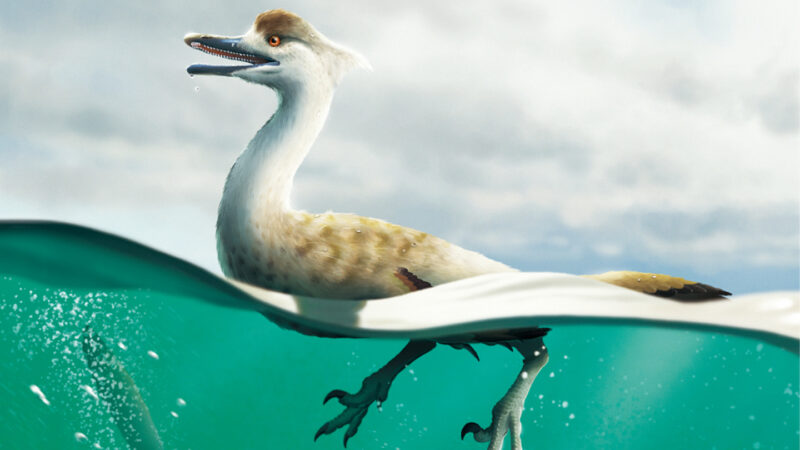A dinosaur unearthed in Mongolia is making a splash among paleontologists, as its sleek physique adds potential evidence to the idea that some dinos were suited for life in the water.
Natovenator polydontus may be the first known nonbird dinosaur to have possessed a streamlined body comparable to that of modern diving birds, researchers report December 1 in Communications Biology. Natovenator and other closely related dinosaurs may have been swimming predators, the researchers say, challenging the popular notion that all dinos were landlubbers.
Natovenator was small like a duck and probably used its forelimbs when swimming, says Yuong-Nam Lee, a vertebrate paleontologist at Seoul National University in South Korea. “We think that Natovenator lived in shallow water and ate small fish,” he says.
This isn’t the first time that researchers have suspected a nonbird dinosaur of having an aquatic lifestyle. For years, paleontologists have debated whether spinosaurs were aquatic predators (SN: 3/23/22). And in 2017, researchers reported that Halszkaraptor —a close relative of Natovenator — had features analogous to those of aquatic birds and reptiles, though the scientists were unable to infer a body shape.
In the new study, Lee and colleagues analyzed a well-preserved skeleton from the Hermiin Tsav fossil formation in Mongolia, found in rocks from the Upper Cretaceous, which dates to about 100 million to 66 million years ago. The skull, teeth, neck and limbs of Natovenator are akin to those of Halszkaraptor, the team reports, suggesting the two probably had comparable lives.
What’s more, the orientation of Natovenator’s ribs indicates that it had a streamlined body like that of modern waterfowl, with a compressed and flattened rib cage akin to aquatic reptiles, the researchers say.
The close resemblance between Natovenator and a duck or cormorant is almost certainly an example of what’s known as convergent evolution, says Thomas Holtz Jr., a vertebrate paleontologist at the University of Maryland in College Park, who was not involved in the study. “Similar body plans evolve because of similar lifestyles.”
It remains unclear just how strong a swimmer Natovenator may have been. The dinosaur’s forelimbs appear short, and its hind limbs seem to lack attributes of kick-propelled swimmers like loons, Holtz says. But semiaquatic mammals like minks and some other successful modern swimming predators have skeletons that aren’t highly specialized for life in the water either, he says. “So Natovenator might be intermediate in swimming ability, between something like a mink and a loon.”


